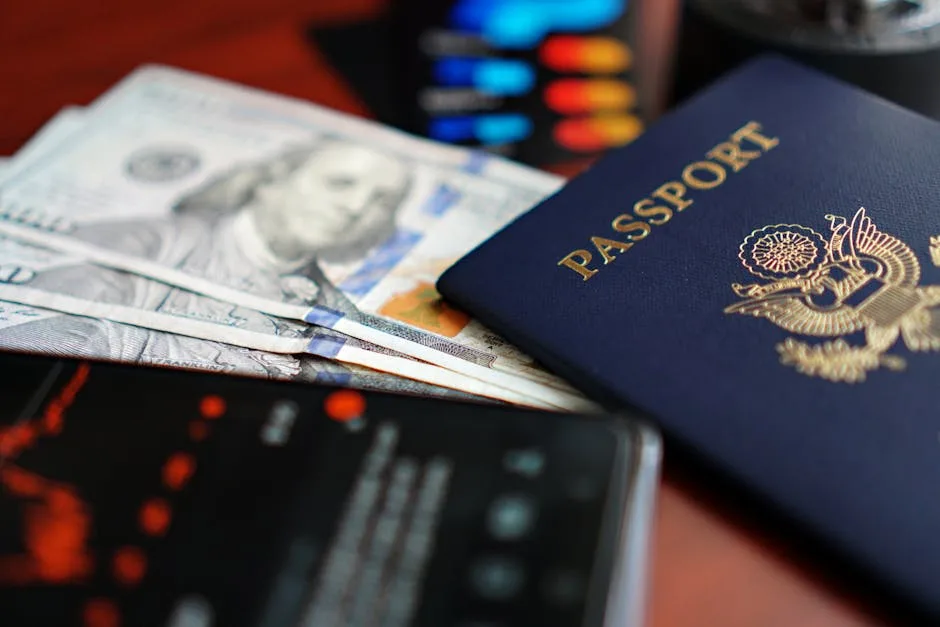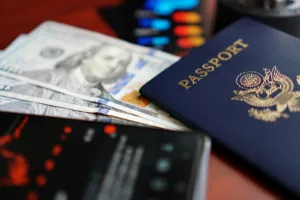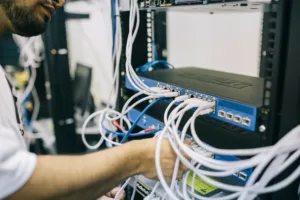
In a significant development for identity verification systems, Apple has joined Google in enabling travelers to store passport information within their mobile device wallets1. This initiative, launched in November 2025, allows users to create a Digital ID using their U.S. passport for identity verification at Transportation Security Administration (TSA) checkpoints2. While marketed as a convenience feature for the holiday travel season, the underlying technology and its implementation present a complex security landscape that requires careful examination.
The core of this system relies on existing e-Passport infrastructure. A standard e-Passport, or biometric passport, contains an embedded microprocessor chip that holds the same information printed on the data page, along with a digital photograph, all secured with digital signatures to prevent forgery1, 4. The Apple Digital ID feature leverages this established technology by requiring users to scan both the photo page and the embedded chip of their physical U.S. passport during the setup process2. This dual-authentication mechanism forms the foundation of the digital identity’s initial verification.
Technical Implementation and Security Protocols
The security architecture of the e-Passport system provides critical safeguards that the digital implementation inherits. Basic Access Control (BAC) requires the passport’s Machine Readable Zone (MRZ) to be optically scanned first to establish an encrypted communication session with the chip, preventing unauthorized skimming7. U.S. e-Passports incorporate physical shielding through a metallic RF shield in the cover, which prevents the chip from being read when the booklet is closed7. Additionally, data on the chip is protected by digital signatures from the issuing country, making any alteration detectable at border control systems that verify these signatures against a Public Key Directory (PKD) maintained by the International Civil Aviation Organization (ICAO)7.
For the Apple Digital ID implementation, security and privacy protections include encrypted data storage exclusively on the user’s device, meaning Apple cannot access usage data2. The system mandates biometric authentication through Face ID or Touch ID for both setup and usage, and requires user approval for information sharing before any data transmission occurs2. A notable feature allows presentation of the Digital ID without unlocking or handing over the device to TSA personnel, maintaining physical security of the device itself2.
Operational Scope and Limitations
It is essential to understand the current operational boundaries of this technology. The Apple Digital ID is specifically authorized for identity verification at over 250 TSA checkpoints nationwide for domestic travel2, 3. However, this digital representation is not a replacement for a physical passport where required by law, particularly for international immigration procedures2, 5. The system functions as a digital companion to physical documents rather than a standalone replacement, creating a hybrid identity verification model.
The setup process involves multiple verification layers that contribute to the system’s security posture. Users begin by tapping the Add button in Apple Wallet and selecting “Digital ID,” then scanning the photo page of their physical U.S. passport2. The iPhone subsequently reads the embedded chip to authenticate the passport data, followed by a selfie capture and completion of facial/head movements for biometric verification2. This multi-factor approach combines document authentication with live biometric verification to establish identity assurance.
Security Considerations for Implementation
The integration of digital identity into mobile ecosystems introduces several security considerations that professionals should evaluate. The reliance on the device’s secure element for credential storage creates a high-value target for attackers, potentially increasing the motivation for sophisticated device-level attacks. The authentication flow, which involves wireless communication between the mobile device and TSA identity readers, presents a potential vector for man-in-the-middle attacks if proper cryptographic protocols are not maintained throughout the transmission process.
From an organizational perspective, the expansion of digital identity systems creates new attack surfaces that require monitoring. Future planned expansions for in-person, in-app, and online identity verification at select businesses and organizations2 will create multiple integration points that must be secured against credential replay attacks and verification system compromises. The industry perspective recognizes digital identity solutions as important for streamlining customer onboarding and KYC/AML compliance while preventing fraud in financial services, travel, and payment sectors8, but each new integration point requires thorough security assessment.
Broader Implications for Identity Systems
The movement toward digital identity representations reflects a broader industry trend toward virtual credentials that serve as secure electronic forms of identification8. These systems aim to balance convenience with security through cryptographic verification and biometric authentication. However, the success of such implementations depends heavily on maintaining the integrity of both the issuing systems and the verification infrastructure throughout the credential lifecycle.
As these systems evolve, security professionals must consider the implications of credential revocation processes, backup authentication methods for device failure scenarios, and international interoperability standards. The current implementation’s limitation to U.S. passports and domestic TSA checkpoints highlights the challenges of creating globally accepted digital identity systems that meet varying international security and privacy requirements.
The introduction of digital passport functionality in mobile wallets represents a significant step in the evolution of identity verification systems. While the current implementation leverages robust security foundations from the e-Passport standard and incorporates additional privacy protections, its expansion beyond controlled environments like TSA checkpoints will require continued security evaluation. Professionals should monitor the development of these systems, particularly as they begin to integrate with broader business and governmental verification processes. The technical safeguards implemented in the current system provide a solid foundation, but the security of any identity system ultimately depends on maintaining vigilance throughout its entire operational lifecycle and across all integration points.
References
- U.S. Department of Homeland Security. (June 1, 2023). e-Passports. Retrieved from https://www.dhs.gov/e-passports
- K. McCarthy. (November 12, 2025). What to know about new Apple Digital ID: How the latest Apple Wallet feature works. ABC News. Retrieved from https://abcnews.go.com/GMA/Travel/new-apple-digital-id-latest-apple-wallet-feature/story?id=127457867
- Transportation Security Administration. (n.d.). Digital Identity and Facial Comparison Technology. Retrieved from https://www.tsa.gov/digital-id
- Wikipedia. (n.d.). Biometric passport. Retrieved from https://en.wikipedia.org/wiki/Biometric_passport
- AAA Club Alliance. (January 10, 2024). How Does a Digital Passport Work?. Retrieved from https://cluballiance.aaa.com/the-extra-mile/advice/travel/how-does-a-digital-passport-work
- Secure Technology Alliance. (n.d.). ePassport Frequently Asked Questions. Retrieved from https://www.securetechalliance.org/publications-epassport-faq/
- Microblink. (November 12, 2025). What is a Digital Passport?. Glossary. Retrieved from https://microblink.com/resources/glossary/digital-passport/






